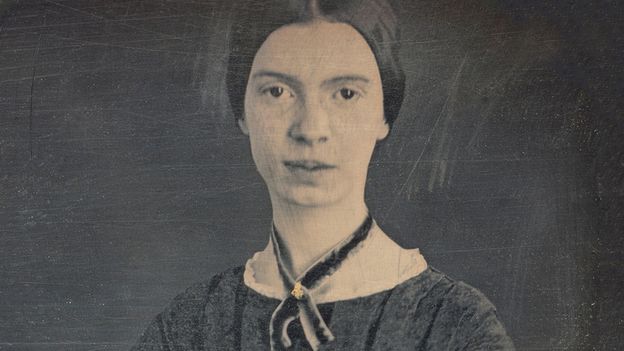The news that Taylor Swift and Emily Dickinson might be related seems particularly timely, given that the pop singer’s latest album – due out in April – is called The Tortured Poets Department. And over the years, there have been links between the two – who genealogy website Ancestry.com claims are sixth cousins, three times removed. (Swift hasn’t yet responded to requests for comment on the report.)
Swift’s 2020 album, Evermore, has been linked to the US poet, with its release date (10 December) being Dickinson’s birthday, and its name similar to “forevermore”, a word that appears in Dickinson’s poem One Sister Have I in Our House. Swift also told Entertainment Weekly that, when imagining the cover of her album Folklore, she had an idea for “this girl sleepwalking through the forest in a nightgown in 1830” – the year Dickinson was born. Some fan theories even suggest that the proposed release date for Swift’s next album, 19 April, is a reference to a Dickinson work labelled as poem 419, also known as We Grow Accustomed to the Dark.
Theories aside, Swift made a concrete mention while accepting the Songwriter-Artist of the Decade award from the Nashville Songwriters Association International in 2022, saying: “If my lyrics sound like a letter written by Emily Dickinson’s great-grandmother while sewing a lace curtain, that’s me writing in the quill genre.” That quote draws on associations with the 19th-Century poet that have long lingered since her death in 1886.
More like this:
– Will Sylvia Plath always be defined by her death?
– The Book that changed how we see Virginia Woolf
– The eerie images of a teenage genius
The cult of Dickinson has coalesced around a very precise image, one that tells us a lot about how we view poets and how we view women poets in particular. It’s pieced together from the most outlandish details of Dickinson’s biography: her penchant for dressing in white, her reluctance to leave her bedroom, her habit of addressing visitors through a door rather than face to face.
It seems to have taken hold almost as soon as her poems found their audience. Though Dickinson wrote nearly 1,800 poems, just 10 were printed during her lifetime. Significant publication came only after her death, aged 55, at which point her work immediately attracted an ardent fan base. Women readers were especially devoted, and started to make pilgrimages to the Homestead, the Dickinson’s home in Amherst, Massachusetts, which is now a museum. Since then, the idea that such poems could have been penned by a secluded spinster toiling in recluse has proven irresistible – especially to generations of gauche, overwrought teenagers. As Nixon puts it, Dickinson is the “patron saint of shy persons”. It’s only part of the story, however, and Terence Davies’ 2017 film A Quiet Passion was just one of a series of creative projects seeking to show other sides of Emily Dickinson.
Truth told slant
“We were taught that she was this reclusive spinster who lived with her family, dressed all in white, and wrote in her room all day”, recalls artist Rosanna Bruno of her high school introduction to the poet in the 1980s. Even then, Bruno felt that the mythology of the poet didn’t really mesh with the poems. “It seemed so incongruous to what she wrote”, she says. “Have you ever heard Helen Mirren reading Wild Nights!? You really have to rethink Dickinson as a reclusive spinster after that rendition.”
Bruno drew a cartoon of one of Dickinson’s best-known poems, Because I could not stop for Death, and when she found herself reading Dickinson’s work again while on a fellowship at the Yaddo artists’ colony in Saratoga Springs more than 20 years later, more drawings came. The result is The Slanted Life of Emily Dickinson, a graphic novel that offers speculative glimpses of Dickinson’s social media feeds.


